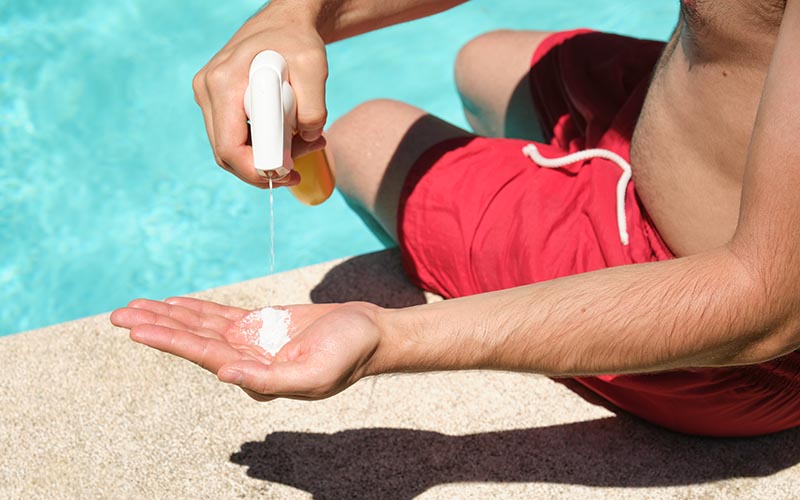
According to the American Academy of Dermatology Association, skin cancer is the most common cancer in the United States, with about 9,500 people in the U.S. diagnosed with skin cancer every day. Exposure to ultraviolet (UV) rays—which come from the sun, sunlamps, and tanning beds—is the biggest risk factor for skin cancer.
Below are tips for how you can reduce your risk year round—yes, you can get sunburned on a cool and cloudy day!
Limit your exposure:
- UV rays are strongest 10 AM – 4 PM. If you’re outdoors during this time, try to stay in the shade. Many surfaces, including sand, water, snow, and pavement reflect UV rays. UV rays, not temperature, do the damage and unprotected skin can be damaged in as little as 15 minutes.
- Avoid sunlamps and tanning beds.
Always wear sunscreen:
- Use a sunscreen that is water-resistant, broad-spectrum (which protects against UVA and UVB rays) and has a sun protection factor (SPF) of at least 30. Most adults will need about 1 ounce — or enough to fill a shot glass—to fully cover their body.
- Apply to all areas of the body that will be exposed to the sun—don’t forget your feet, neck, ears, and top of head! Apply 15 to 30 minutes before going outside.
- Reapply every two hours, even on cloudy days, and every hour when swimming or sweating.
- Don’t use sunscreen that has expired.
- Use lip balm with an SPF of at least 30.
Learn more about sunscreen in this DocTalk video from Valley dermatologist David Drimmer, MD.
Choose clothing that covers:
- Wear lightweight, long-sleeved shirts and pants to cover your body.
- Wear a hat with wide brim that shades face, head, ears, and neck.
- For more protection, wear clothing with UPF (ultraviolet protection factor).
- Wear sunglasses that block both UVA and UVB rays, protecting both your eyes and eyelids.
Learn more about dermatology care at Valley.
Learn more about cancer care at Valley.
Content for this article was derived from American Academy of Dermatology Association, Centers for Disease Control and Prevention and Staywell Health Library and was reviewed by Valley’s Dermatology Clinic.

